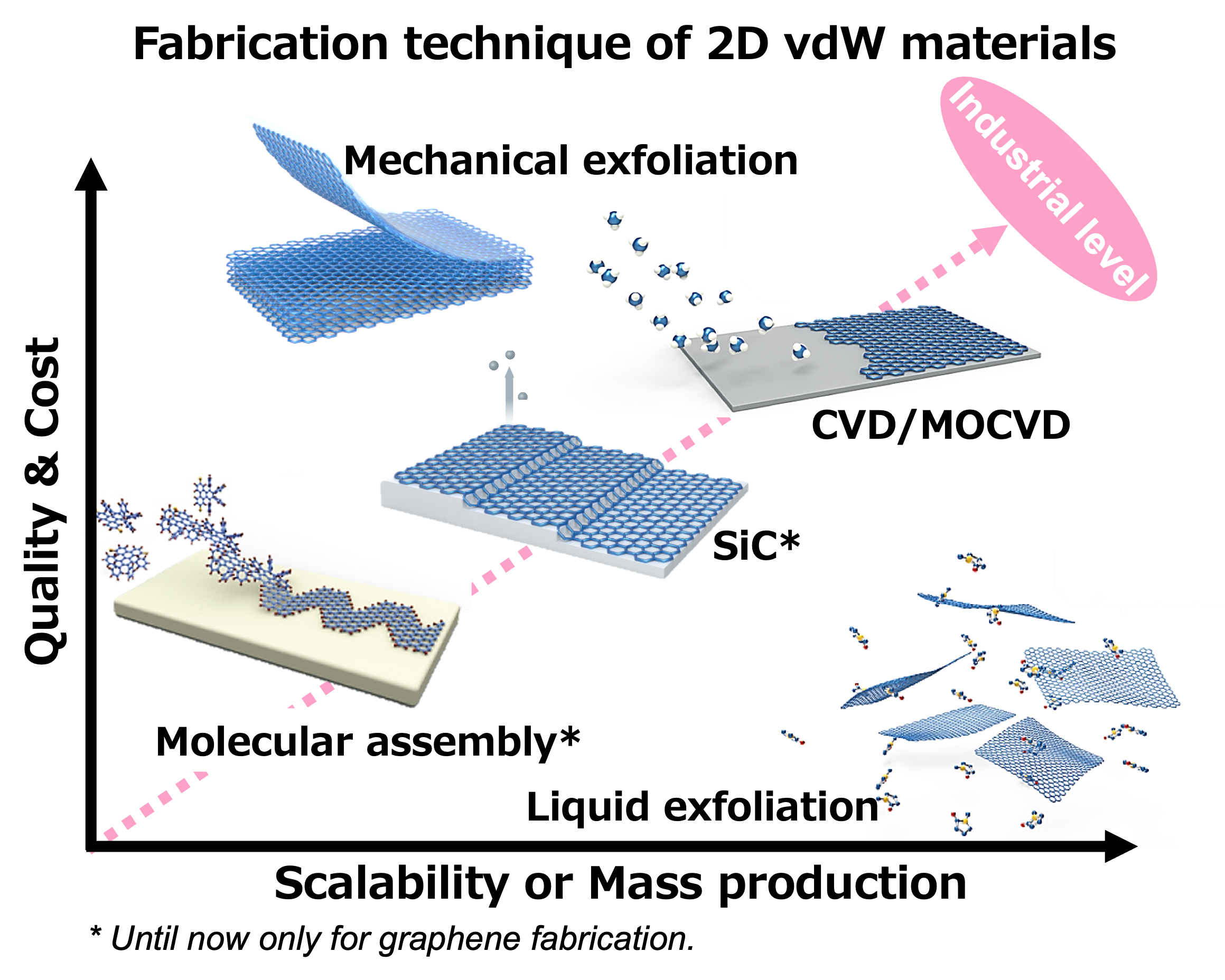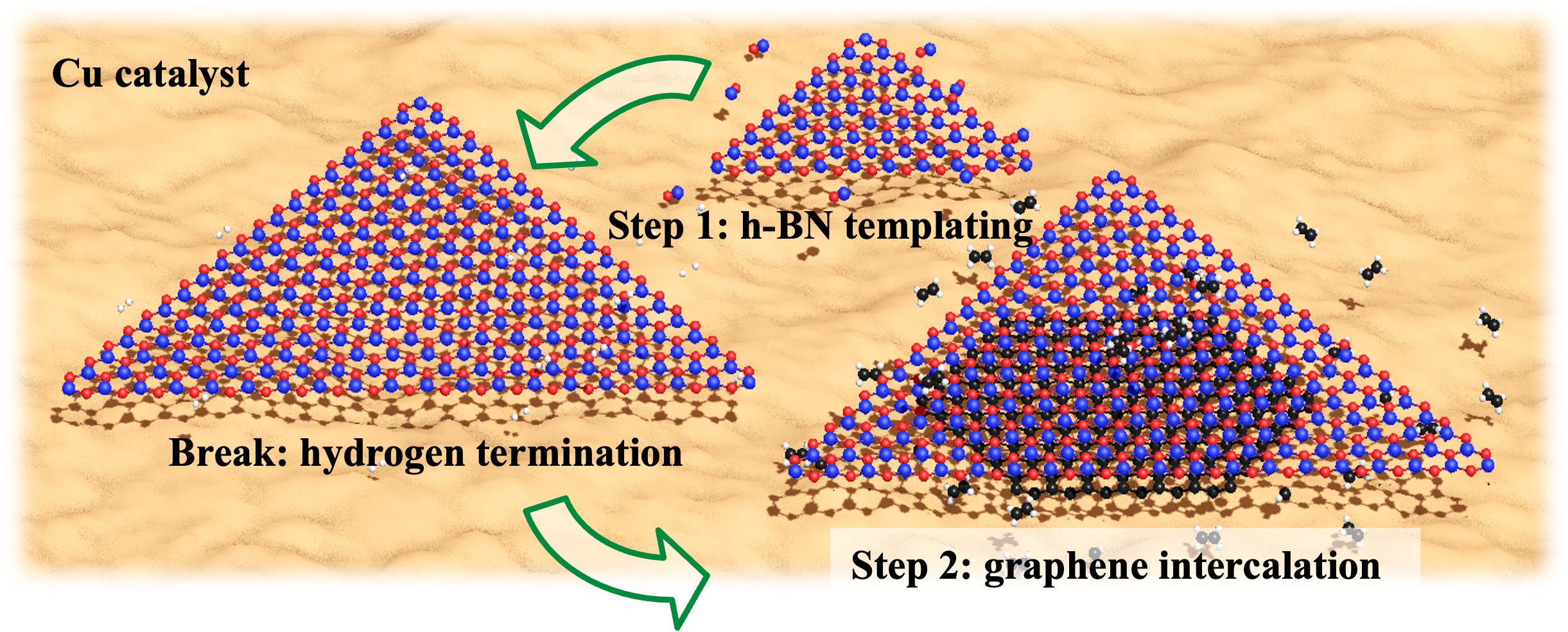Graphene and 2D Materials
Since graphene’s isolation in 2004, hundreds of two-dimensional van der Waals (2D vdW) materials—including graphene-like materials, chalcogenides, and nitrides—have been studied. These materials span a wide electronic energy gap and absorption wavelengths. Recent advances in vdW heterostructures enable precise control of charge, exciton, photon, and phonon dynamics through planar twisting and vertical stacking. Here, we present our results on controllable growth of 2D vdW materials and their heterostructures.

For future industrial applications, various methods are explored for 2D material synthesis, but none fully ensure controllability. Chemical vapor deposition (CVD), with its flexible precursors and catalysts, offers high quality, low cost, and stability, making it ideal for wafer-scale growth of low-defect, single-crystalline structures. Tunable bandgaps in Group III–VI vdW semiconductors and moiré engineering in 2D heterostructures pave the way for the development of advanced optoelectronics and quantum technologies. Controllable growth is the key to unlocking their full potential.
